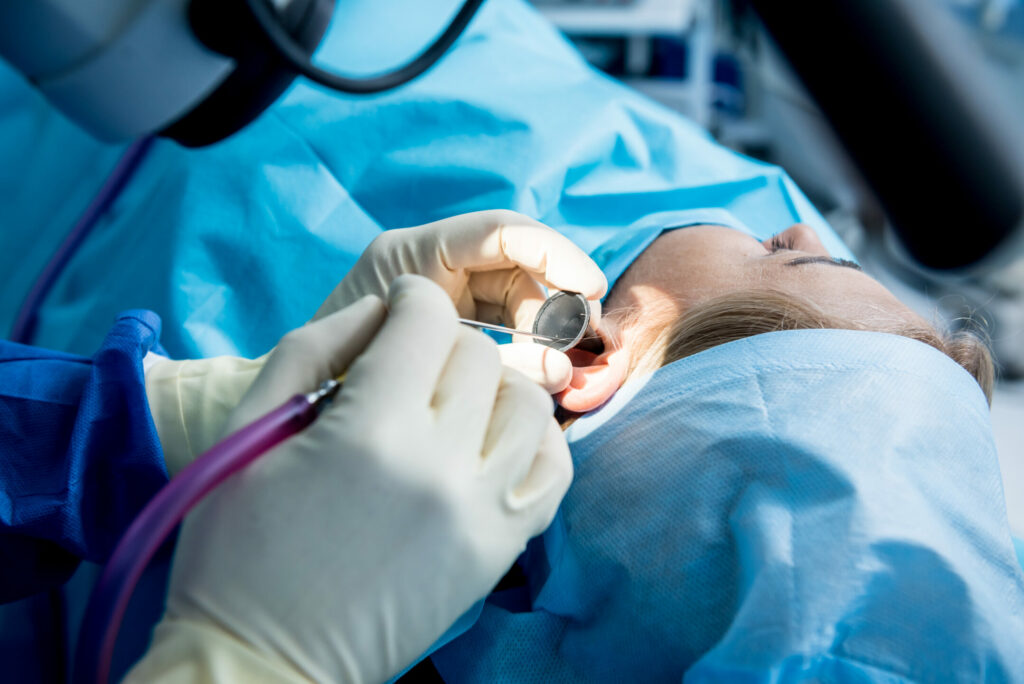Dr. Hodges
NCEENT

Ear tubes are small devices implanted in the eardrum. They are used to treat recurring infections, structural problems, and damage caused by pressure changes. Tubes in ears provide ventilation, prevent fluid accumulation, and equalize pressure.
The placement of ear tubes is more common in children, who are susceptible to chronic middle ear infections. There are many good reasons for placing ear tubes in adults too. If you struggle with ear infections, damage, or ear pain, learn more about ear tubes and if they might be right for you.
 Ear tube surgery is the placement of a small tube inside the ear canal. The procedure involves two parts:
Ear tube surgery is the placement of a small tube inside the ear canal. The procedure involves two parts:
A myringotomy can be a stand-alone procedure to drain fluid from the ear. It is often followed by a tympanostomy to prevent further fluid buildup or for other reasons.
The ear tube is a small tube made of metal or plastic. Each end of the tube has rims that hold it in place in the eardrum. The tube provides a drainage path for fluid in the ear and prevents fluid buildup. The tube placement is designed to be temporary. The tube will either come out or will be removed.
The insertion of ear tubes is more common in children than adults. The position of the Eustachian tube in children contributes to regular fluid buildup, which leads to more frequent ear infections. An ear tube promotes drainage, reducing infections.
Some adults also can benefit from this procedure as a treatment or preventive measure:
Ear tube placement is a common and safe procedure. However, there are always risks to consider:
Adults have higher ear tube failure rates than children, but the placement is still generally considered safe. Not every adult is a good candidate for the procedure, however. A specialist will examine you before the operation and determine if you have any contraindications.
Ear tube placement is a relatively quick outpatient procedure with minimal complications. Ear, nose, and throat specialists (otolaryngologists) perform the surgery using local anesthesia.
Before the procedure, you will receive numbing drops in the ear. The surgeon will then perform the myringotomy, making a small hole in your eardrum. You will tilt your head to let fluid drain out of your ear. Depending on the amount of fluid, the surgeon might use suction to remove it all.
The next step is the tympanostomy. The surgeon will use small forceps to insert the tube into the incision in your eardrum. You will then get instructions on what to do at home and how to make a follow-up appointment in a few weeks.
Your surgeon will explain the recovery process, the timeline, and what you can and cannot do after this procedure. Expect some drainage in the days following the ear tube placement. You might also have minor ear pain and a little bit of blood in the fluid.
Your doctor may prescribe antibiotic ear drops to use after the surgery. You can also use over-the-counter medications to manage pain. You will likely be told not to submerge your head in water in the first week. Once you have healed, it is safe to bathe and swim.
Although you should be able to get back to work and do most normal activities the next day, complete healing can take up to four weeks. Contact your surgeon if symptoms persist longer, are severe, or worsen. Other reasons to contact your doctor include a fever, a discharge with a lot of blood or pus, loss of hearing, swelling around the ear, or extreme dizziness.
These risks are rare with ear tube surgery, which is generally very safe. If you have additional questions, such as the costs of tubes in ears for adults or if the procedure is right for you, make an appointment with one of our NCSH ear, nose, and throat surgeons.
View News & Press